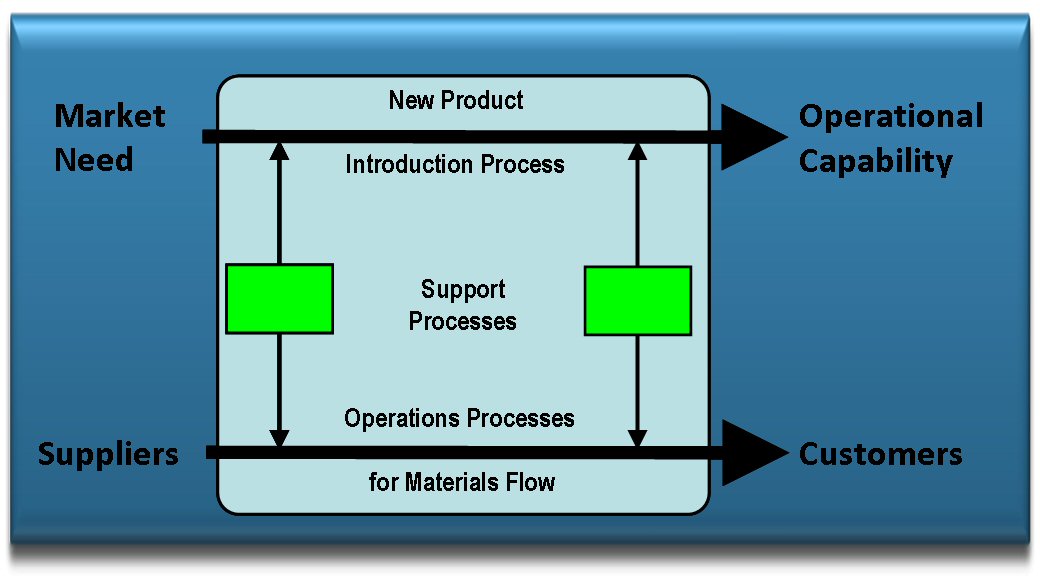3.05 - Developing an appropriate IT/IS Strategy
Integrated Support for Business Processes
Limitations of traditional approaches
- Complex computer systems, on top of fragmented organisational structures and unimaginable complexity. It is better to simplify and cellularise the organisation first and then apply IT in a structured way as part of in Information Systems (IS) strategy.
- No computer system can be effective if the data are inaccurate. This is often the result of inadequate organisational disciplines, leading to Bill of Material errors, wrong parts lists, routings, lead-times and other related product definition and scheduling inaccuracies.
- Computer Systems architectures not matched to organisational process architectures and responsibilities
- An emphasis on department-centred computing leads to over-fragmentation and excessive expenditure on personal computers and mini-computers, which are then ineffectively used.
- Modular MRP II systems installations not fully completed and commissioned. On average only 5 out of 14 modules are likely to be fully installed – so limiting capability
- Inadequate attention paid to simplification of organisational processes, elimination of paperwork and wasteful activities, prior to installing computer systems.
- No preparatory structuring of material and information flows to ensure that simplified computers systems can be used via such mechanisms as Kanban and period flow control
- Excessive time and money on evaluating and testing software packages, even though there is little to choose between generic element commodity packages such as PLM, MRP II, financial, and personnel support software systems. It is the way systems are specified, installed, commissioned, integrated and managed which counts. Effective project management is the key to success
Four common errors
- The basic rule – “first simplify then automate” – is not applied
- Information Technology (IT) is not centralised and integrated within core business flow processes
- The uncontrolled use of personal computers rarely yields the expected benefits. Low percentage time use often results
- Failure to understand the technical difficulties of networking, or interconnecting dissimilar machines and operating systems across the engineering, manufacturing and commercial areas.
Matching the IS Strategy to Core Business Processes
The setting of strategic targets for a business and the definition of critical success factors is the first essential step prior to identifying those targets for which IT can make an important contribution. Information Technology is used to support Information Systems strategy.
Two dimensions must be used to structure the IS strategy
- The definition of core business flow processes based on natural groupings in an oriented organisation – three main sets of cross functional processes with three main interfaces for interconnection and matching of inputs and outputs and all information needs.
- The definition of generic elements or building blocks which make up core processes and the specification of standard IT support tools for each of these.
For example, the materials flow management process has four generic elements – supply logistics, component manufacture, sub-assembly and manufacturing assembly. A standard MRP I function is essential and the other standard IT tools required depend on the proportions of Kanban, period flow and jobbing sequence control mechanisms used in each part of the flow. Similar analogies apply in other processes.
The IT system must match the organisation structure and support the generic control meetings used to manage and control each business process. It should embody best practice client-server approaches to combine networked, distributed, close to user support, with back-up power and common database management tools in a stable standardised environment.
Computer support systems should provide centralised integrated support for each business process with careful attention being paid to database design and its management mechanisms. A set of interfacing communication and network standards should be defined.
Core Business Processes

Additional Information
Core to the company operation is an effective Bill of Materials control system (see guides 6.13 and 6.14). The Master Scheduler and the Bill of Materials Administrator both have key roles in a manufacturing business. The priority is to have IT / IS systems that supports and co-ordinates their mission critical activities. Get the BOM wrong and chaos results. Get the Master Schedule wrong and capacity will be wasted. Get both wrong and soon you probably will not have a business!